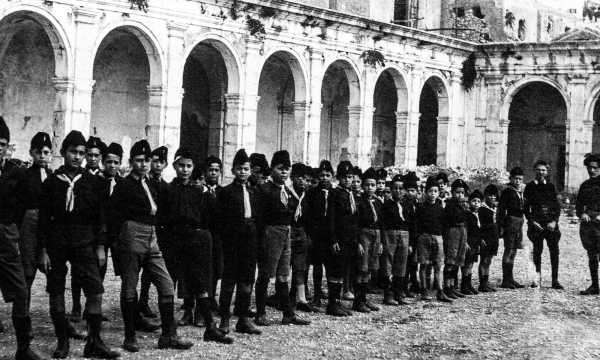
In recent months, I have had the privilege of helping curate an exhibition, “This Fascist Life: Radical Right Movements in Interwar Europe,” which is running from October 2021 to February 2022 at the Wiener Holocaust Library in London. Just as the Science Museum’s new show, “Our Future Planet,” promises to inspire us to become climate activists and more and more museums are trying to “decolonize” their offering by exposing how imperialism shaped their collections and our society as a whole, “This Fascist Life” aims to help visitors understand the radical right in order to combat it.
Pax Romana, a Fascist Peace
READ MORE
You’ve probably seen Nazi flags, war medals and photos of Benito Mussolini before, but that is not what this exhibition is all about. Rather than focus on fascist regimes, with Adolf Hitler’s Third Reich taking pride of place as the epitome of all evil, “This Fascist Life” focuses on fascist movements — radical-right groups that rarely seized power but nonetheless encouraged mainstream politicians to adopt racist and chauvinistic policies, transforming city streets into arenas of fighting and bloodshed.
Displays of Fascism
So much of British national identity has been shaped by the war against Nazi Germany that it is easy to forget that the United Kingdom had its fascists as well. Newspapers, printing blocks and sheet music from Oswald Mosley’s British Union of Fascists are on display, alongside material from the Britons’ Publishing House and the Imperial Fascist League.
Many of the objects are from the Wiener Holocaust Library’s own collection, while others come from the Searchlight Archives at the University of Northampton or were purchased specifically for the exhibition. The widespread popularity of the blackshirts, as Mosley supporters were known, in Britain and the blueshirts in Ireland reminds us how easily radical-right movements were able to mobilize men and women who were disgruntled by poverty and taxes, and felt that their national values were being undermined by internationalism and humanitarianism.
Racism and anti-Semitism played their part too, and the books and pamphlets on display are full of hate speech toward Jews and immigrants.
Embed from Getty Images
Every country in Europe had one — usually several — fascist movements in the 1930s. Chauvinism and an ideology of national rebirth were not the only motivating forces that attracted people to join. In fact, in many cases, movements existed for several years before publishing substantial ideological statements. For war veterans and young men, fascist movements often provided an excuse to socialize with friends and possibly to have a bit of fun by beating up communists and Jews or by vandalizing a synagogue.
These movements gave young women a chance to get involved in political systems that otherwise excluded them while still displaying the conservative cultural values they cherished, turning their backs on left-wing ideologies such as feminism.
Fascists promoted sport and physical fitness as the key to creating the “new men” who would rule their countries in the future. Joining thus involved playing football, cycling, boxing, gymnastics or basketball, and movements in Britain and France ran summer camps and sporting competitions for their members. Uniforms — in some cases homemade — transformed fascists into walking advertisements for their movements, and they paraded through city streets demonstrating their strength and unity.
Transnational Phenomenon
Reflecting recent trends in historical research on fascism, the exhibition emerges out of a collaborative project funded by the Arts and Humanities Research Council that brings together experts on interwar fascism in 18 different countries across Europe. Specialists on Finland, France, Germany, Latvia, the Netherlands, Romania and Sweden are giving talks at the library in conjunction with the exhibition, showing that fascism was a truly transnational phenomenon in the interwar years.
Even while they claimed to be fighting to put their own countries first, fascists wrote to fascists in other countries, traveled to meet them, shared news in right-wing magazines and organized international conferences for the radical right. When the Second World War broke out, fascists in many countries collaborated in the mass murder of Jews and Roma that became known as the Holocaust.
Whereas so often pictures and films of Nazi rallies at Nuremberg or of shouting crowds in Italy make fascism seem surreal or from another world, the images, objects, books, newspapers and posters on display in the “This Fascist Life” exhibition bring us back to reality. Fascists met in villages as well as cities, attracted the young and the old, men and women, workers and artists, peaceful patriots and violent thugs.
People joined for a variety of reasons, many of them petty, and became swept up in the excitement of movements that promised to create whole new worlds on top of the ruins of this one.
The Wiener Holocaust Library’s mission is “to oppose antisemitism and other forms of prejudice and intolerance … through an active educational programme.” Understanding the attraction and tactics of fascist movements in their heyday provides us with the knowledge and tools we need to diffuse the power of the radical right in the 21st century.
*[Fair Observer is a media partner of the Centre for Analysis of the Radical Right.]
Source: fairobserver.com



